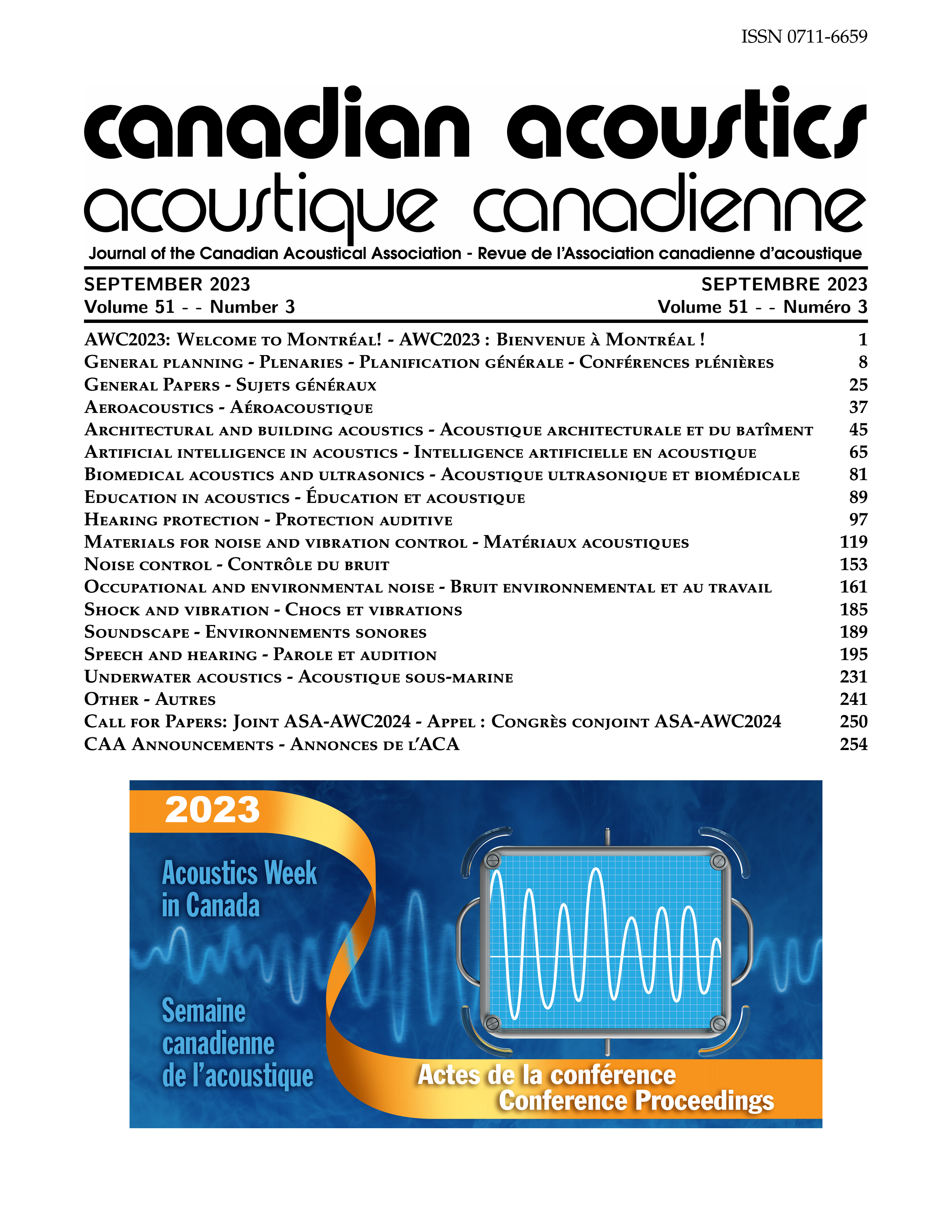Influence of the Scattering Effect on Acoustic Image Obtained with a Spherical Microphone Array
Résumé
Longterm exposure to noise in the workplace can lead hearing loss and other psychosocial effects. Among the most effective noise reduction methods is to apply efforts directly at the source. To do so, each source must be characterized by their spatial location and contribution. In the workplace, a Spherical Microphone Array (SMA) can be used. When the microphones are held on a wireframe structure or on thin rods, the SMA is considered acoustically transparent, and the Conventional Beamforming in the Frequency domain (CBF) algorithm can be used. The CBF, however, does not compensate for the scattering effect of a diffracting object. On the other hand, rigid SMAs are usually made of a solid sphere with flush-mounted microphones and may scatter the acoustic waves. Although the literature has shown the advantages of using a rigid SMA with the spherical harmonics decomposition, the influence of the scattering effect on the acoustic image when not accounted for remains under-examined. This study aims to assess the influence of the uncompensated scattering effects on acoustic images obtained with a SMA. Images obtained with a rigid SMA are compared to those obtained from a theoretical perfectly transparent SMA using the CBF. First, a spherical wave field is simulated using a finite element analysis model to generate the microphone signals for both SMAs. Then, the images are generated using the CBF and three image quality criteria are used to assess the scattering effects, i.e., the ellipse area ratio, the mainlobe-to-sidelobe ratio and the mainlobe level. Results show that the influence of the scattering effect, if not corrected, will reduce the width of the mainlobe and amplify the level of the sidelobes. The effect on the estimated source level is not significant in this case.Fichiers supplémentaires
Publié-e
Comment citer
Numéro
Rubrique
Licence
Author Licensing Addendum
This Licensing Addendum ("Addendum") is entered into between the undersigned Author(s) and Canadian Acoustics journal published by the Canadian Acoustical Association (hereinafter referred to as the "Publisher"). The Author(s) and the Publisher agree as follows:
-
Retained Rights: The Author(s) retain(s) the following rights:
- The right to reproduce, distribute, and publicly display the Work on the Author's personal website or the website of the Author's institution.
- The right to use the Work in the Author's teaching activities and presentations.
- The right to include the Work in a compilation for the Author's personal use, not for sale.
-
Grant of License: The Author(s) grant(s) to the Publisher a worldwide exclusive license to publish, reproduce, distribute, and display the Work in Canadian Acoustics and any other formats and media deemed appropriate by the Publisher.
-
Attribution: The Publisher agrees to include proper attribution to the Author(s) in all publications and reproductions of the Work.
-
No Conflict: This Addendum is intended to be in harmony with, and not in conflict with, the terms and conditions of the original agreement entered into between the Author(s) and the Publisher.
-
Copyright Clause: Copyright on articles is held by the Author(s). The corresponding Author has the right to grant on behalf of all Authors and does grant on behalf of all Authors, a worldwide exclusive license to the Publisher and its licensees in perpetuity, in all forms, formats, and media (whether known now or created in the future), including but not limited to the rights to publish, reproduce, distribute, display, store, translate, create adaptations, reprints, include within collections, and create summaries, extracts, and/or abstracts of the Contribution.


